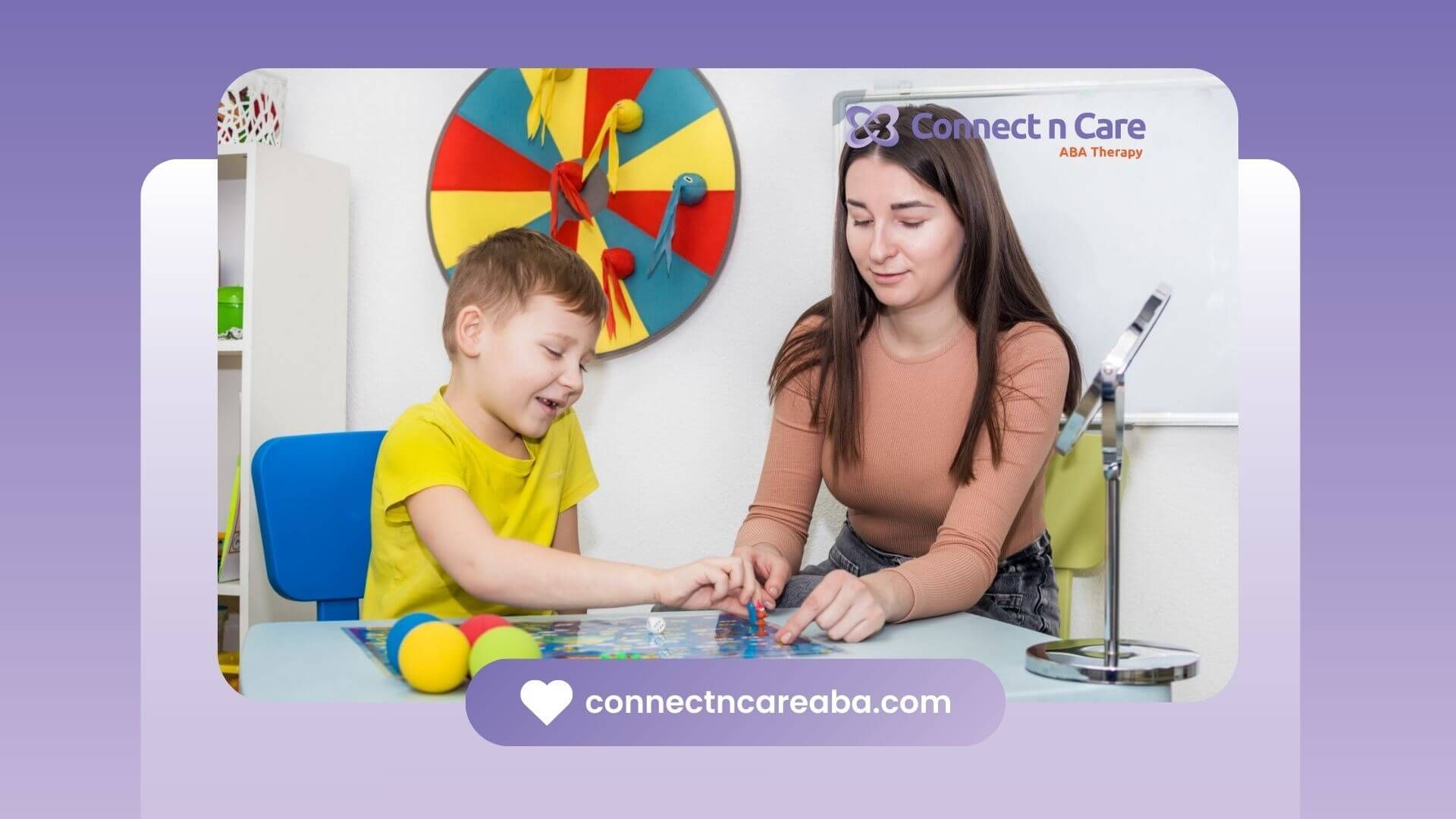Key Highlights
- Applied Behavior Analysis (ABA) is a highly effective therapy for more than just autism spectrum disorder.
- ABA therapy uses positive reinforcement to teach new skills and reduce behavioral issues.
- It is successfully used to treat various developmental disabilities, including intellectual disabilities.
- The principles of ABA can help manage symptoms of ADHD, anxiety, and obsessive-compulsive disorder.
- ABA also supports individuals in developing crucial communication, social, and life skills.
- Treatment plans are always personalized to meet unique needs and foster independence.
ABA therapy is best known for helping children with autism — but it can also transform lives for those with ADHD, anxiety, and other developmental challenges.
One parent I worked with was surprised when her child with ADHD began thriving after starting in-home ABA sessions. Structured routines, visual schedules, and reinforcement strategies helped him finally stay focused at school. She told me it felt like “getting her son back.”
ABA and Autism Spectrum Disorder
Why ABA Is Known for Autism
ABA has the strongest evidence base for autism treatment. According to the Centers for Disease Control and Prevention (CDC), early intensive behavioral interventions like ABA significantly improve communication, social interaction, and daily living skills for children on the spectrum.
Organizations such as the U.S. Surgeon General and the American Psychological Association endorse ABA as the most effective, research-backed therapy for autism. Because of its proven results, many families turn to ABA soon after a diagnosis.
Core Goals in Autism-Focused ABA
ABA therapists break down complex skills into smaller, achievable steps, rewarding progress along the way. The most common areas of focus include:
- Communication: Expanding language and speech abilities.
- Social interaction: Building friendships and learning social cues.
- Self-care: Skills like brushing teeth, dressing, or toileting.
- Cognitive and academic skills: Improving focus, memory, and school performance.
- Behavioral challenges: Reducing tantrums, aggression, or repetitive behaviors.
By using positive reinforcement, therapists motivate individuals to repeat helpful behaviors, leading to steady, lasting progress.
ABA for Developmental Disabilities
Intellectual Disabilities Beyond Autism
ABA isn’t just for autism. It’s also highly effective for people with intellectual disabilities such as Down syndrome or Fragile X syndrome.
Learning new skills can be difficult for individuals with these conditions, but ABA makes progress possible by breaking tasks into manageable steps. For example, instead of teaching “making a meal” all at once, a therapist may begin with simple tasks like washing hands or preparing ingredients.
According to a review in the Journal of Applied Behavior Analysis, individuals with intellectual disabilities who received ABA interventions showed significant improvements in independence and participation in daily life.
Supporting Daily Functioning and Independence
A key goal of ABA is helping people develop skills that make everyday life easier. Therapists often focus on:
- Personal hygiene: Brushing teeth, showering, getting dressed.
- Household tasks: Doing laundry, cooking simple meals, or tidying up.
- Community safety skills: Crossing the street safely, using money, or navigating public transportation.
By building these skills step by step, ABA empowers individuals to be more independent and confident in their abilities.
ABA Applications in Behavioral and Emotional Disorders
Treating ADHD and Impulse Control Challenges
Attention-Deficit/Hyperactivity Disorder (ADHD) can make focusing, sitting still, and controlling impulses difficult. ABA offers structured strategies that support better behavior and academic engagement.
A 2022 review in the Journal of Child Psychology and Psychiatry found that ABA-based interventions helped children with ADHD improve focus, reduce impulsivity, and perform better in school.
ABA Strategies for ADHD
Strategies for Inattention
- Break tasks into small, manageable steps.
- Use timers (e.g., Pomodoro) to create focus sprints.
- Provide visual aids (checklists, cue cards, color coding).
Strategies for Impulsivity
- Teach “stop and think” routines (pause–plan–proceed).
- Rehearse self-talk scripts for choice points.
- Reward waiting and taking turns (token economy).
Strategies for Hyperactivity
- Build in frequent, brief movement breaks.
- Offer jobs that channel movement (errands, “runner” roles).
- Reinforce calm sitting with immediate, specific praise.
Strategies for Disorganization
- Use checklists with clear, prioritized steps.
- Post visual schedules and routines.
- Keep consistent “homes” for materials; label containers.
These strategies, taught through reinforcement and consistent practice, help children and adults with ADHD manage their daily responsibilities more effectively.
Managing Anxiety and Obsessive-Compulsive Behaviors
ABA can also be adapted for people with anxiety disorders and obsessive-compulsive behaviors. Therapists focus on identifying triggers, teaching coping strategies, and rewarding positive responses.
For instance, structured exposure paired with reinforcement helps individuals gradually face fears while learning healthier ways to respond. According to the National Institute of Mental Health, behavioral therapies that use reinforcement-based approaches show measurable success in reducing anxiety symptoms.
ABA’s Role in Speech, Language, and Social Skills
Communication Development Through ABA
Strong communication is essential for independence. ABA supports speech and language development by teaching skills step by step — from requesting items to forming sentences to holding conversations.
Therapists often use prompting and reinforcement. For example, if a child tries to say a word, they receive praise or access to a favorite toy. Over time, these efforts build into clearer, more confident communication.
Key ABA strategies for communication include:
- Requesting: Asking clearly for what they need.
- Labeling: Naming objects, people, or actions.
- Conversation skills: Taking turns, asking questions, and staying on topic.
- Nonverbal communication: Practicing eye contact and gestures.
Facilitating Social Interaction and Peer Relationships
Social skills can be tough for children and adults alike. ABA helps by creating structured opportunities for role-play, group activities, and real-life practice.
Therapists may guide individuals through:
- Starting conversations in natural settings.
- Sharing and turn-taking in games and group tasks.
- Perspective-taking to understand others’ feelings.
- Conflict resolution strategies to manage disagreements respectfully.
With consistent practice, individuals often feel less anxious in social situations and more confident making friends.
Conclusion
Applied Behavior Analysis (ABA) is far more than a therapy for autism. It’s a flexible, evidence-based approach that improves communication, social, emotional, and daily living skills across a wide range of conditions — from intellectual disabilities to ADHD and anxiety.
Because every treatment plan is tailored to the individual, ABA meets people where they are and helps them move toward greater independence and a higher quality of life.
If you’re considering ABA therapy in North Carolina or Virginia, Connect n Care ABA is here to help. We provide:
- At-home ABA therapy tailored to your child’s needs.
- School-based ABA programs to support academic and social success.
- Clinic-based ABA therapy in a structured, supportive environment.
Contact Connect n Care ABA today to schedule a consultation and learn how ABA therapy can make a difference for your family.
Frequently Asked Questions
Is ABA therapy only used for children?
No. While many children receive early intervention, ABA is also effective for teens and adults. Programs may focus on employment, relationships, or independent living.
Can ABA benefit adults with emotional or behavioral disorders?
Yes. Adults struggling with anxiety, anger, or workplace social skills often benefit from ABA strategies tailored to their specific challenges.
What conditions show the greatest improvement with ABA therapy?
Autism spectrum disorder has the most research supporting ABA. But individuals with intellectual disabilities, developmental delays, ADHD, and anxiety also show meaningful improvement with consistent ABA therapy.
Sources:
- https://www.cdc.gov/autism/treatment/accessing-services.html
- https://www.cdc.gov/ncbddd/actearly/parents/states.html
- https://www.cdc.gov/adhd/treatment/behavior-therapy.html
- https://link.springer.com/article/10.1007/s41252-019-00134-w
- https://childmind.org/article/behavioral-treatments-kids-adhd/
- https://pmc.ncbi.nlm.nih.gov/articles/PMC6494600/









